Achieving high-precision 0.1mm slitting with hot stamping foil slitting machines requires a synergy of comprehensive mechanical design, control systems, and process optimization. Here are the key techniques and implementation methods:
1. High-precision mechanical structure design
• Rigid frame: Cast iron or alloy steel frame is used to reduce vibration and deformation, ensuring stability in the slitting process.
• Precision guidance system: linear guide rail or static guide rail with high-precision ball screw, positioning accuracy up to ±0.01mm.
• Tool holder system:
◦ Circular cutter slitting: using cemented carbide or diamond-coated tools, the cutting edge runout ≤ 0.005mm.
◦ Pneumatic/hydraulic knife pressure control: The constant pressure system ensures uniform cutting force (e.g. pressure fluctuation ≤ 0.1N).
◦ Dynamic tool adjustment technology: real-time adjustment of tool pitch (e.g., ±0.02mm compensation) through servo motor.
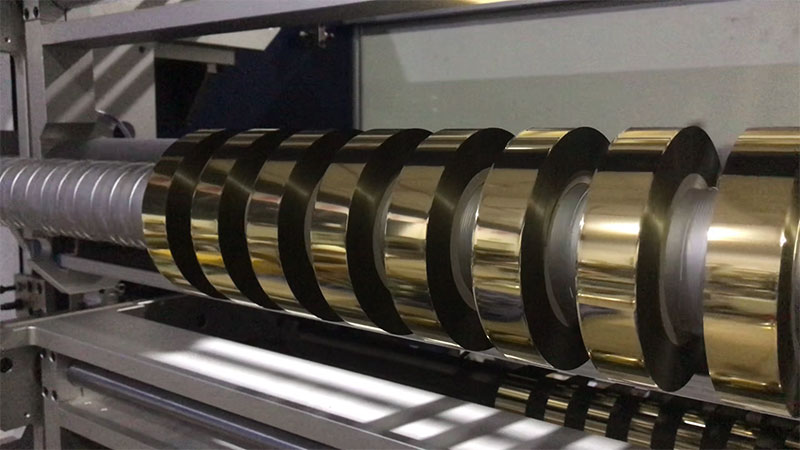
2. High-resolution motion control
• Servo drive system:
◦ Servo motor with 24-bit encoder, repeatable positioning accuracy ± 0.003mm.
◦ Electronic gear synchronization technology, the error of the master-slave axle ratio < 0.01%.
• Tension control:
◦ Closed-loop PID control, magnetic particle brake/servo torque control, tension fluctuation ≤ 0.5N.
◦ Floating roller + tension sensor feedback, response time < 10ms.
3. Vision and inspection system
• CCD online detection:
◦ 5 million pixel industrial camera to detect slitting edge deviation (resolution 0.02mm/pixel).
◦ Real-time image processing algorithms (such as Halcon) achieve ± 0.05mm deviation correction.
• Laser rangefinder: Monitor changes in coil thickness (accuracy ± 1μm) and feed back to the control system.
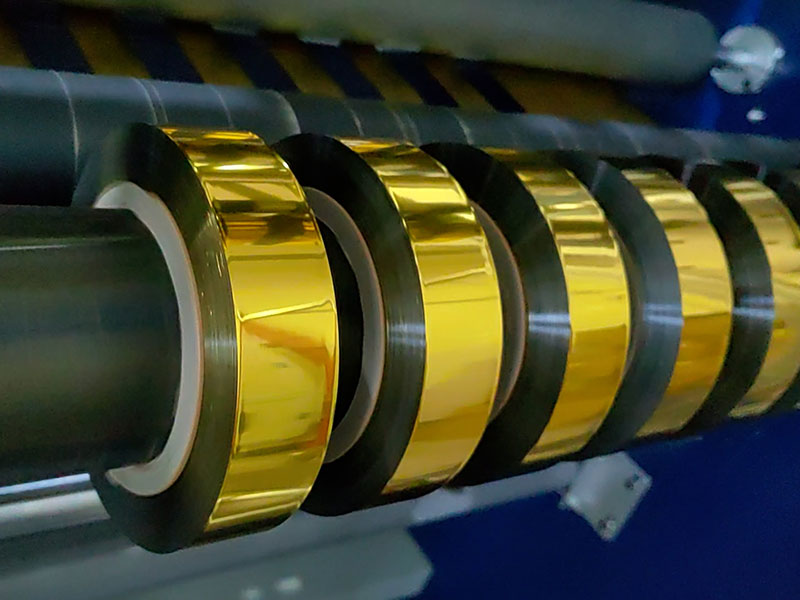
4. Material and process optimization
• Foil stamping pretreatment:
◦ Constant temperature and humidity environment (23±1°C, RH50±5%) reduces material expansion and contraction.
◦ Unwinding pretension control (e.g., 2-5N/mm²).
• Slitting parameters:
◦ Blade speed to material feed ratio (e.g., 1:1.2) reduces burrs.
◦ Tool angle (typically 20°-30°) optimizes cutting force.
5. Intelligent compensation technology
• Thermal deformation compensation: temperature sensor + AI algorithm predicts the expansion of the tool shaft and corrects the offset in real time.
• Wear Monitoring: Acoustic emission sensors detect tool status and automatically adjust cutting depth.
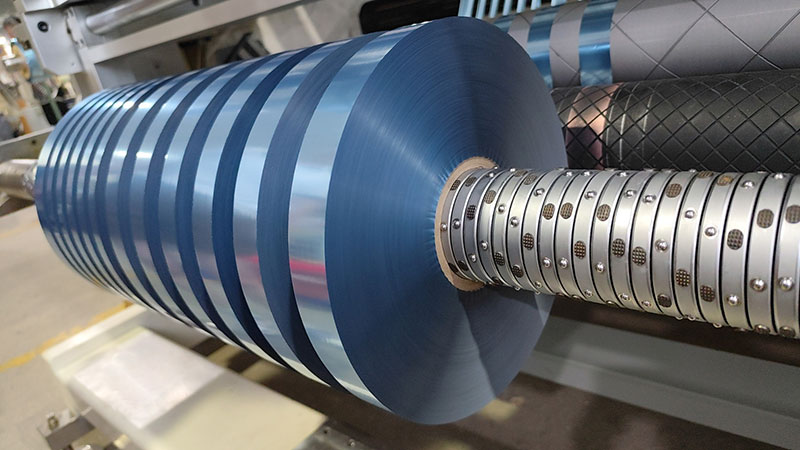
6. Human-computer interaction and data management
• HMI interface: set slitting parameters (such as speed, width, tension) and display the accuracy curve in real time.
• Data traceability: Record the process parameters (e.g., temperature, tension, deviation value) of each roll slitting for SPC analysis.
Typical performance metrics
| parameter | index |
| Slitting accuracy | ± 0.05mm (long-term stability ± 0.1mm) |
| Maximum slitting speed | 300m/min |
| Applicable foil width | 50-1500mm |
| Roll diameter | Φ600mm (max) |
Industry Applications
• High-end packaging: cigarette packs, wine labels (slitting without burrs, edge finish Ra≤0.4μm) is required).
• Electronic materials: flexible circuit board shielding film (anti-static slitting environment required).
Through the system integration of the above technologies, modern hot stamping foil slitting machines can achieve sub-millimeter accuracy, meeting the processing needs of high-end manufacturing industries for precision materials. In practical applications, it is necessary to calibrate the tools and sensors regularly and adjust the process parameters for different foils (e.g., PET, PVC substrates).
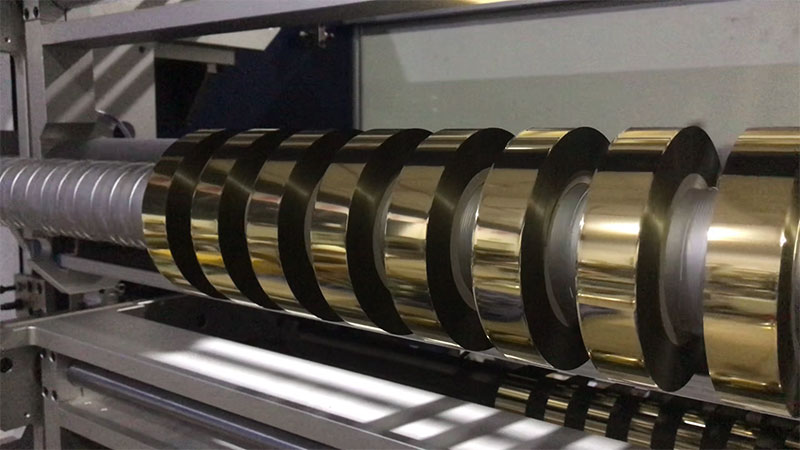 Key points of long-term reliability evaluation of hot stamping foil slitting machine: How to protect investment safety on the blade?
Key points of long-term reliability evaluation of hot stamping foil slitting machine: How to protect investment safety on the blade?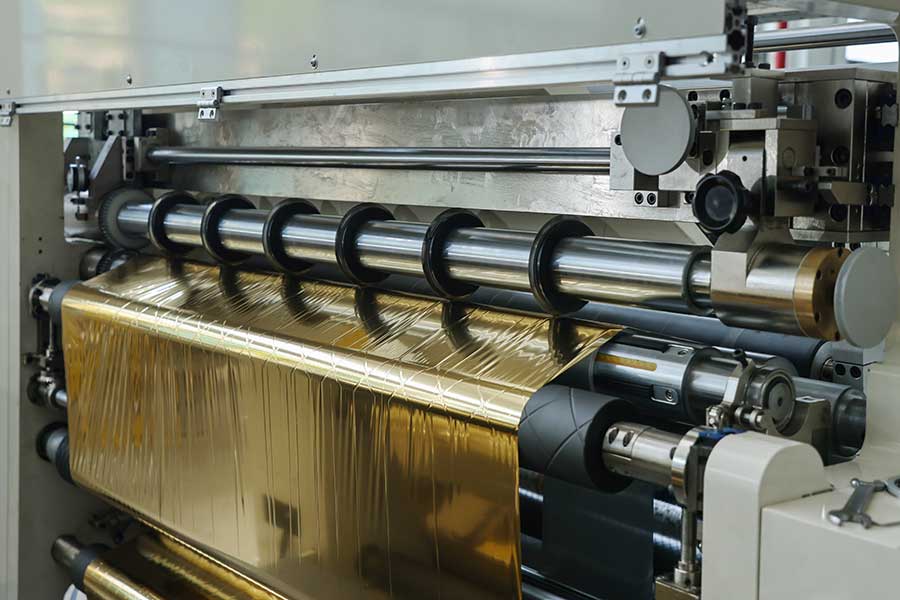 Real user feedback: Reliability challenges and countermeasures in the production of hot stamping foil slitting machines
Real user feedback: Reliability challenges and countermeasures in the production of hot stamping foil slitting machines Simplifying the complex: when the hot stamping foil slitting machine learns to "think"
Simplifying the complex: when the hot stamping foil slitting machine learns to "think"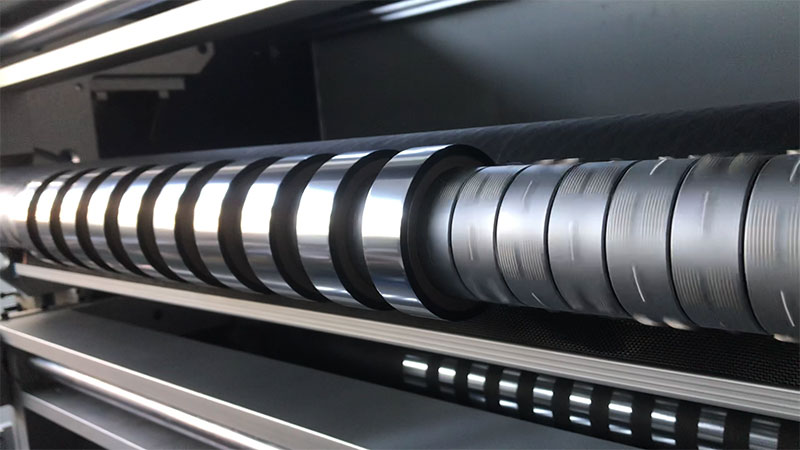 Reduced downtime: Reliability improvement solution for hot stamping foil slitting machines
Reduced downtime: Reliability improvement solution for hot stamping foil slitting machines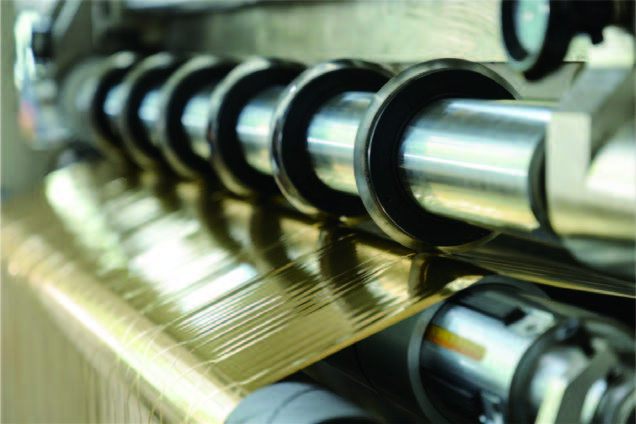 High reliability commitment: Durability testing and guarantee of hot stamping foil slitting machines
High reliability commitment: Durability testing and guarantee of hot stamping foil slitting machines